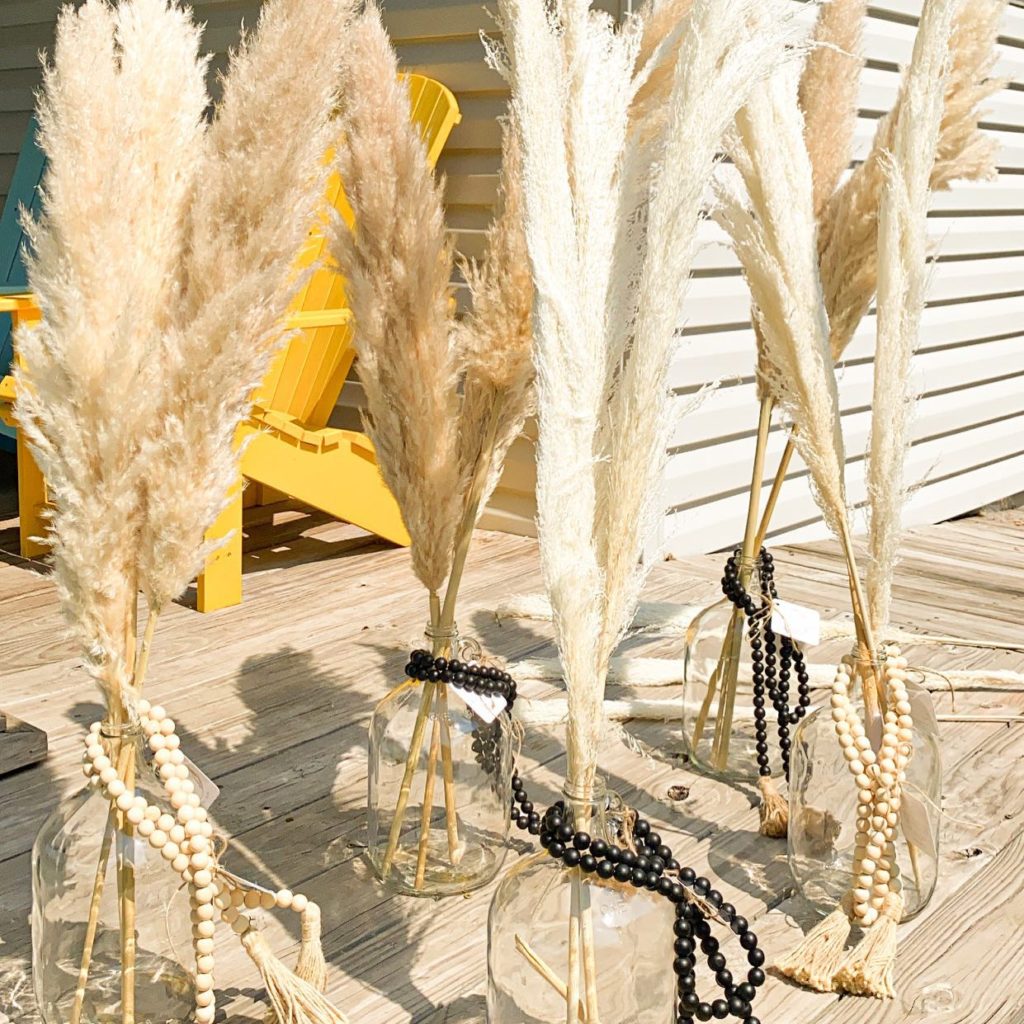Many household plants are strategically placed for decoration and to maintain feng shui. But did you know that some of these same plants also have health benefits?
The Pampas Grass is one of those plants known for both looking good and improving air quality. Keep reading to learn more about the Pampas Grass, its health benefits, and how to care for one.
Table of Contents
Pampas Grass Benefits
The Pampas Grass, commonly referred to as mother-in-law’s tongue, is a resilient succulent that can grow anywhere between 6 inches to several feet.
In addition to providing a bit of ambiance, snake plants have a number of health benefits.
Filter indoor air, even at night
Similar to other household succulents, Pampas Grass help to filter indoor air. What’s unique about this particular plant is that it’s one of the few plants that can convert carbon dioxide (CO2) into oxygen at night.
This quality makes it an ideal plant for bedroom decor as it can help regulate healthy airflow.
Remove toxic pollutants
Pampas Grass are also known for their ability to help remove toxic air pollutants. Though in small contributions, Pampas Grass can absorb cancer-causing pollutants, including CO2, benzene, formaldehyde, xylene, and toluene.
With the ability to absorb and remove harmful toxins, snake plants can act as an effective defense against airborne allergies.
How to fast grow Pampas Grass?
Pampas grass requires a lot of sunlight to grow, so select a spot that gets a minimum of six hours of direct sun per day. Prepare the soil. Pampas grass needs rich and moist but well-drained soil to grow. Plant the seeds. Water the site.
Once you have viable pampas grass seeds, take them indoors and press them into cell packs or flats containing well-draining soil during the mid-to-late winter months. Ensure they have plenty of light and warmth (between 65 and 75 degrees Fahrenheit), and then transplant the seedlings for female plants (which have fuller plumes that don’t produce seed) in the spring.
When to Plant Pampas Grass
Pampas grass is a perennial grass. It grows dormant in winter and then re-grows in spring. Gardeners must plant the male and female plants separately in order to pollinate this dioecious species for fruit production.

Once you have pampas grass seed that is viable, bring them inside and pack them in cell packs or flats with well-draining soil. Make sure they get plenty of sunlight and heat (between 65-75 degrees Fahrenheit) before transplanting the female seedlings (which have larger plumes and don’t produce seeds) in the spring.
What is a Pampas Grass?
A common houseplant, the Cortaderia selloana is ative to southern South America, including the Pampas region after which it is named. It can be recognized by its evergreen sword-shaped leaves that grow upright, and almost resemble artificial foliage.
Pampas Grass are often used as home decor, as they’re pleasing to the eye, easy to care for, and require little water to survive.
These plants are considered to be relatively safe, but they’re mildly toxic if consumed. Their leaves contain a poison that can cause swelling and numbness on the tongue if eaten in large doses. It’s wise to keep this plant away from children and animals that are prone to nibble.
Pampas Grass Cultivars
Several cultivars are available, of which the following have gained the Royal Horticultural Society’s Award of Garden Merit:
- Aureolineata
- Evita
- Monstrosa
- Patagonia
- Pumila
- Silver Feather Notcort
- Sunningdale Silver
Pampas Grass Cons
Pampas Grass has become invasive throughout North America. It has also been banned in Hawaii and New Zealand because of its ability to outgrow and displace native plants. In Europe, it was first introduced in the United Kingdom, later spreading to other countries in the continent like Ireland, Portugal, Spain, France, and Italy.
Pampas Grass Appearance
Pampas grass is fast-growing and can form large masses along the roads, cliffs, riverbanks, and open areas that have been disturbed by human activities or natural disturbances. Pampas grass can displace native plants and destroy their habitats, reducing biodiversity. The blade-like leaves may cause physical harm to the birds who feed off of it. The plant also competes with other native plants by monopolizing resources like shade, sunlight, and ground nutrients. Because of the large surface area, the leaves pose a significant fire hazard if placed near flammable substances.
Types of Pampas Grass
The Cortaderia saleoana species includes 25 varieties of pampasgrass. The most popular are Gold Band with its white plumes and Pink Feather which is a pink pampasgrass with rose-colored blossoms.
A dwarf pampasgrass ( Cortaderia saleoana pumila), and two pampas plants that aren’t in the soldoana plant species: Cortaderia Jubata also known as Andean, purple pampass grass and Saccharum ravennae or hardy pampass grass.
Pampas Grass Control Method
Herbicide treatment can control Pampas grass. The grass must be cut near the base to achieve this. To increase penetration, a 2% solution of glyphosate is mixed with a silicone-based solvent. This technique is most effective in fall as it provides better control than other seasons. To prevent seeds from spreading and pulling seedlings, another control method is to bag inflorescences.
Invasion can be promoted by soil disturbances that leave bare ground. It is important to reduce disturbance and provide competition for seedlings. To control disturbance, mulch can be applied to the bare ground to prevent seeds from germination and smother them. To reduce seedling establishment and germination, you can also plant or seed non-invasive plants.
Pampas Grass Trivia
- Several media outlets reported that it was planted by some couples who practise swinging in the United Kingdom as a way to indicate to other swingers that they enjoy that lifestyle.
- The reports caused a plunge in already declining sales, but the odd association has been dismissed by enthusiasts and gardening experts as “silly”.
Read Also : Snake Plant Wikipedia, Benefits, Cautions, Types, How to Grow & more
